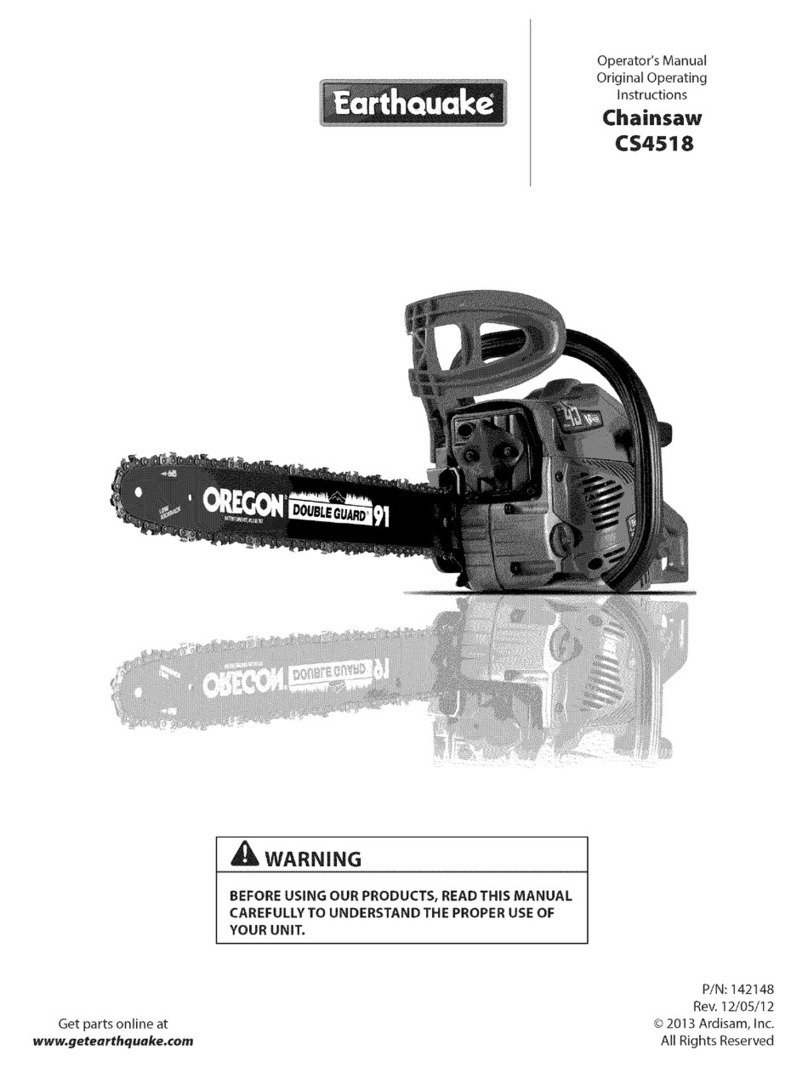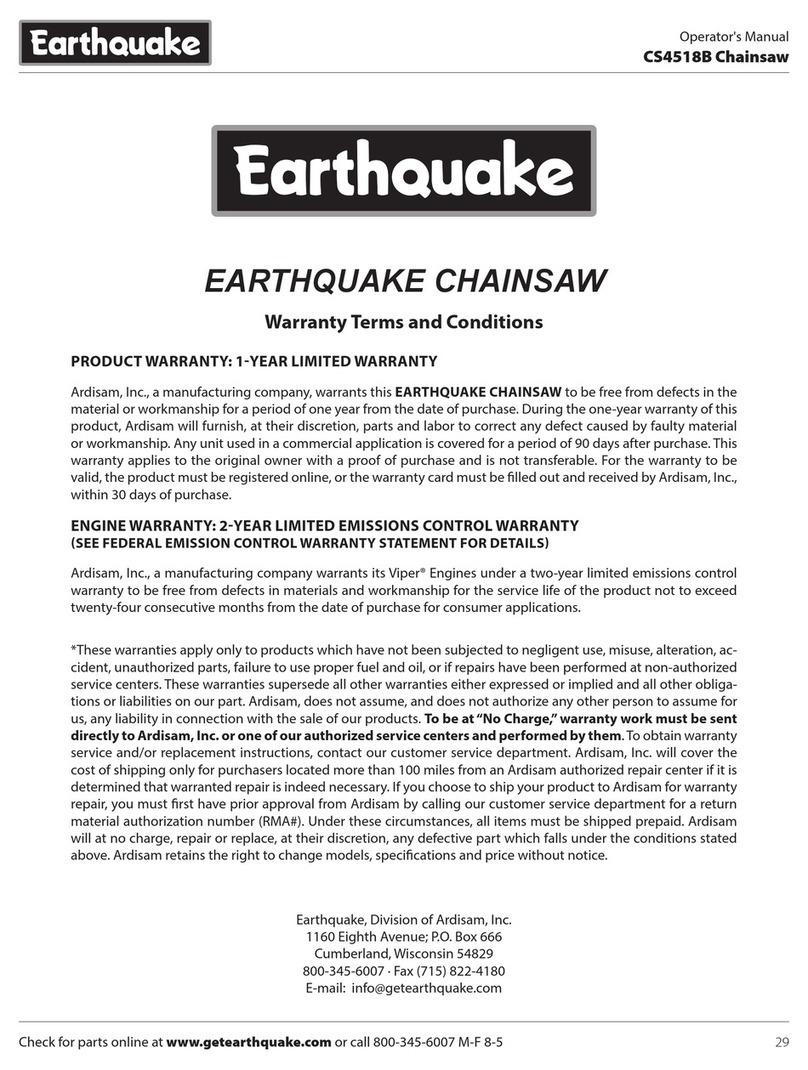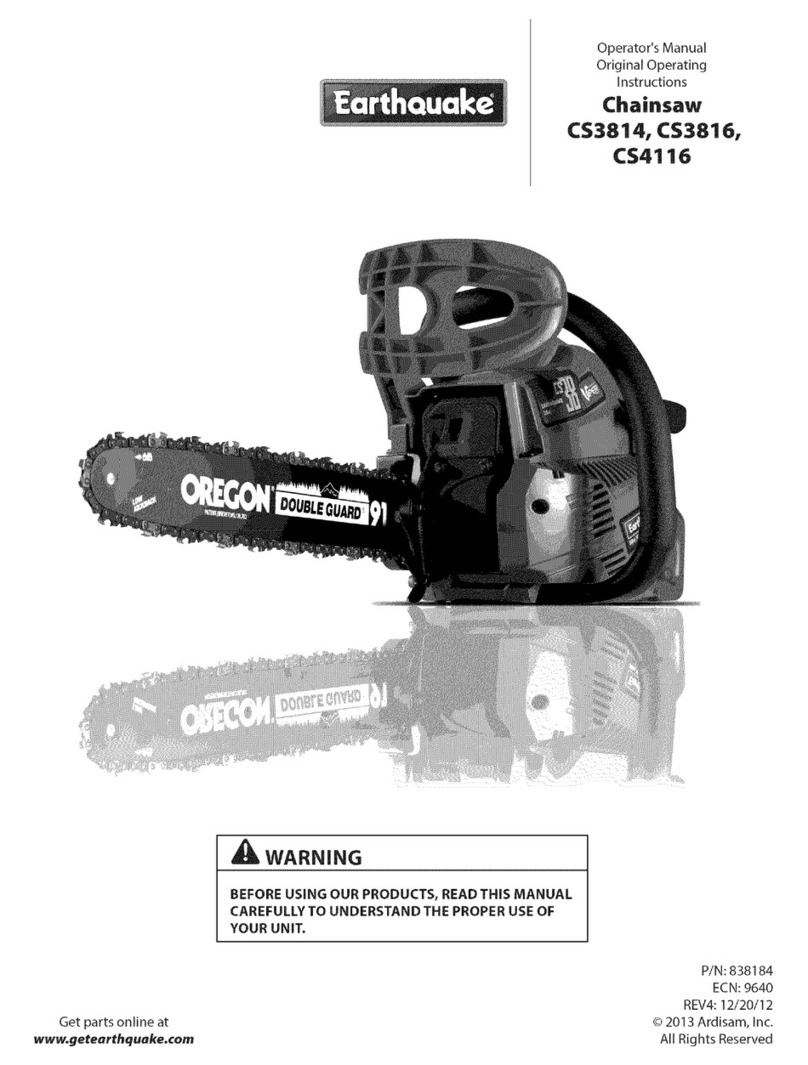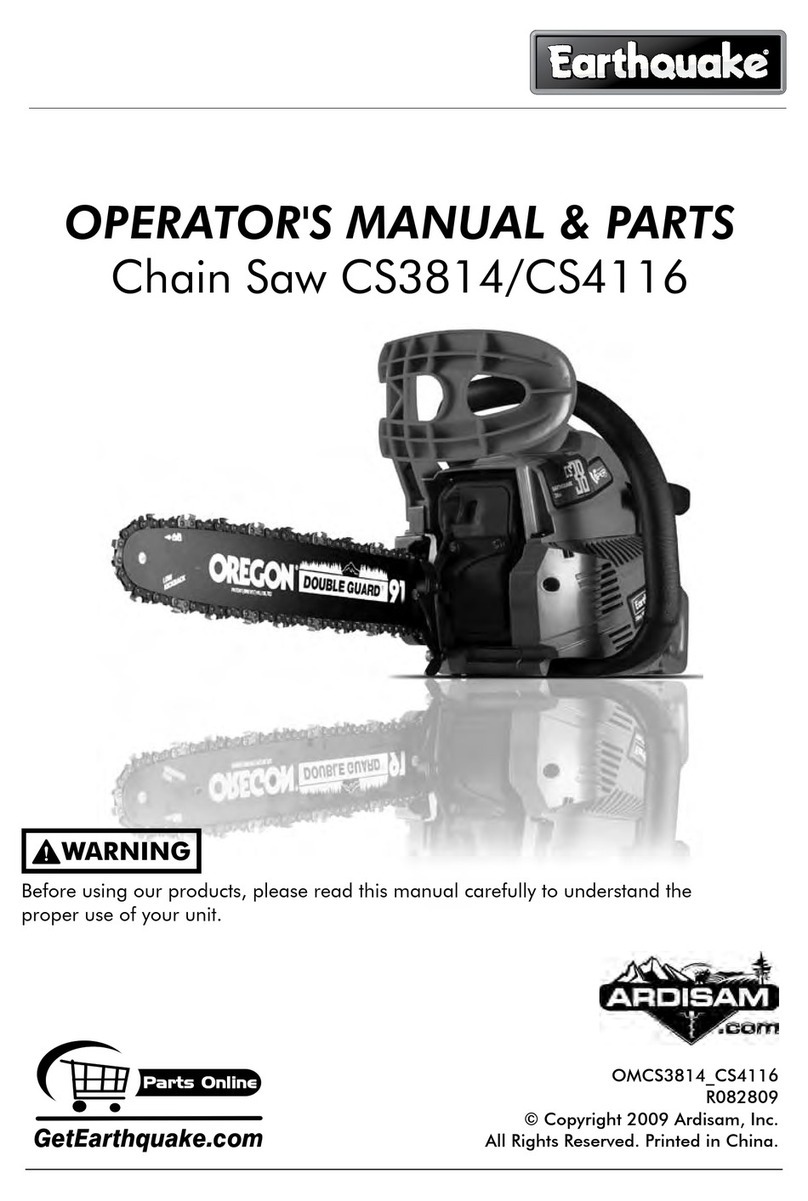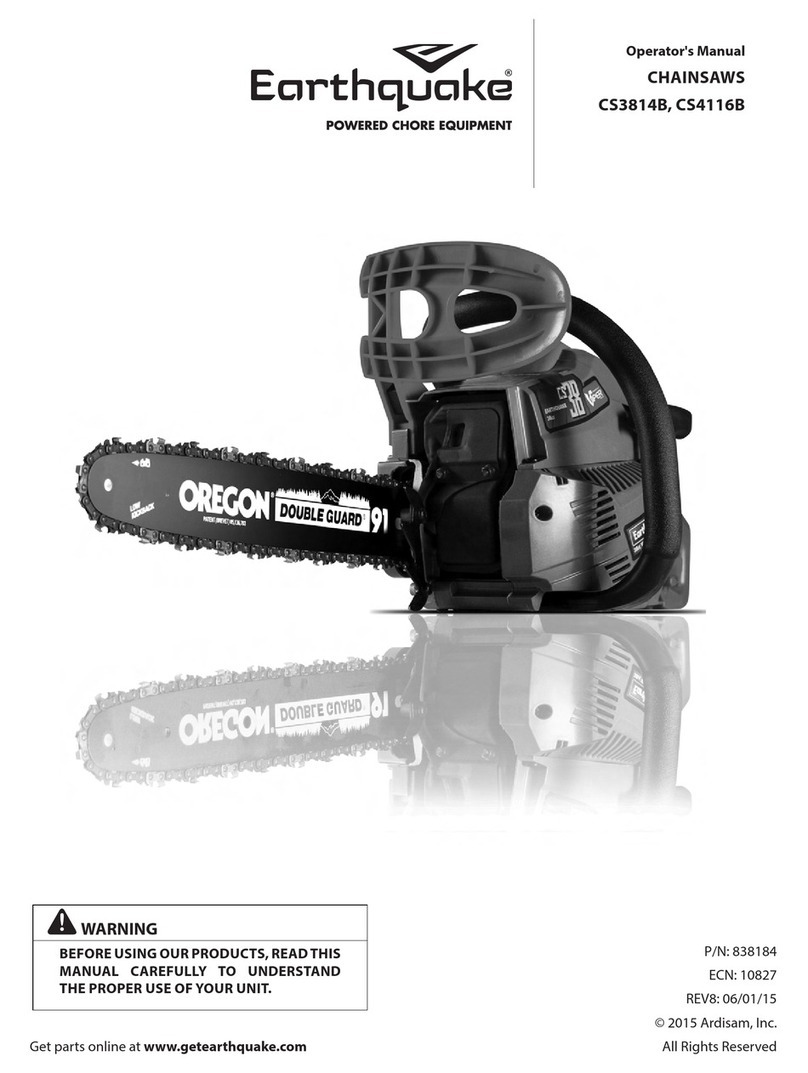
Check for parts online at www.getearthquake.com or call 800-345-6007 M-F 8-54
Operator's Manual
CS3814B, CS4116B Chainsaws
GENERAL SAFETY RULES
• Read, understand, and follow all instructions on the machine
and in the manual(s). Be thoroughly familiar with the controls
and the proper use of the machine before starting.
• Use this equipment for its intended purpose only.
• Familiarize yourself with all of the safety and operating
decals on this equipment and on any of its attachments or
accessories.
• Do not put hands or feet near or under rotating parts.
• Only allow responsible individuals who are familiar with the
instructions to operate the machine. Do not allow children
to operate this machine. Do not allow adults to operate the
machine without proper instruction.
• Thoroughly inspect the area where the machine is to be
used and remove all foreign objects. Your equipment can
propel small objects at high speed causing personal injury
or property damage. Stay away from breakable objects, such
as house windows, automobiles, greenhouses, etc.
• Wear appropriate clothing such as a long-sleeved shirt or
jacket. Also wear long trousers or slacks. Do not wear shorts.
Never wear sandals, sneakers, or open shoes, and never
operate the machine with bare feet.
• Do not wear loose clothing or jewelry. They can get caught in
moving parts. Always keep hands, feet, hair and loose clothing
away from any moving parts on engine and machine.
• Always wear safety goggles or safety glasses with side shields
when operating the machine to protect your eyes from
foreign objects which can be thrown from the unit. Always
wear a protective hearing device.
• Always wear work gloves and sturdy footwear. Wear
footwear that will improve footing on slippery surfaces.
Leather work shoes or short boots work well for most people.
These will protect the operator’s ankles and shins from small
sticks, splinters, and other debris.
• It is advisable to wear protective headgear to prevent the
possibility of being struck by small ying particles, or being
struck by low hanging branches, twigs, or other objects
which may be unnoticed by the operator.
• Do not operate the machine without proper guards or other
safety protective devices in place.
• See manufacturer’s instructions for proper operation and
installation of accessories. Only use accessories approved
by the manufacturer.
• Operate only in daylight or good articial light.
• Do not operate product when fatigued or under the
influence of alcohol, drugs or other medication which
can cause drowsiness or aect your ability to operate this
machine safely.
• Never operate machine in wet grass. Always be sure of your
footing; keep a rm hold on the handle and walk; never run.
• Watch for trac whenever you are operating near, or when
crossing roads.
• If the equipment should start to vibrate abnormally, stop the
engine (motor), disconnect the spark plug wire and prevent
it from touching the spark plug. Check immediately for cause.
Vibration is generally a warning of trouble. If the noise or
vibrations of the machine increase, stop immediately and
perform an inspection.
• Never leave the machine unattended when the engine is
running. Remove the wire from the spark plug.
• Regularly inspect the machine. Make sure parts are not bent,
damaged or loose.
• Temperature of muer and nearby areas may exceed 150° F
(65° C). Allow muer and engine areas to cool before touching.
Never pick up or carry the machine while the engine is running.
• Prolongedexposuretonoiseandvibrationfromgasoline engine-
powered equipment should be avoided. Take intermittent
breaks and/or wear ear protection from engine noise as well as
heavy work gloves to reduce vibration in the hands.
• Keep all screws, nuts and bolts tight.
• Do not transport the machine from one place to another
with the engine running.
• When moving the packaged machine, always do so with a
partner.
• Check local regulations for age restrictions on use of this
machine.
PRODUCTSPECIFIC SAFETY RULES
• After striking a foreign object, stop the engine. Remove the
wire from the spark plug. Inspect the chainsaw for damage. If
damaged, repair before starting and operating the chainsaw.
• The cutting chain of the chainsaw should not rotate when
the engine is idling. If it does rotate when engine is idling,
contact Earthquake for instructions.
• If an object becomes lodged in the saw, turn engine o,
remove the wire from the spark plug and secure, allow to
cool before attempting to remove the foreign object.
• The clutch will transfer maximum power after about two
hours of normal operation. During this break-in period clutch
slippage may occur. The clutch should be kept free of oil or
other moisture for ecient operation.
• Never cut in high wind, bad weather, when visibility is poor,
or in very low temperatures. Always check the tree for dead
branches that could fall during the felling operation.
• Neverstartcuttinguntilyouhaveaclearworkarea,secure
footing and a planned retreat path away from the falling
tree.
